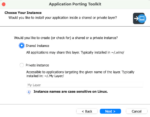Windows developers can now stay in a single development environment for the entire iOS application development process with the release today of Xamarin 3, the company’s eponymous native app development platform that enables developers to build native apps for Android, iOS and Windows using C#.
“Our mission has been to make it fast, easy and fun to create mobile apps, and that’s what we are still doing, and it is what’ve been focused on,” said Nat Friedman, CEO and cofounder of Xamarin.
(Related: Xamarin tools for Google Glass development)
The release comes at a time when a majority of every business process and customer transaction takes place on a mobile device with high user-experience expectations, according to Friedman. Xamarin 3 looks to make it faster for businesses to reach consumers on all major platforms.
A new feature in Xamarin 3 is Xamarin Designer for iOS, an alternative to Apple’s Xcode. The designer is fully integrated into Xamarin’s supported IDEs, Visual Studio, and Xamarin Studio, so developers no longer have to switch between Visual Studio and Xcode during development. It has a more intuitive user interface than Xcode, Friedman claimed, and enables preview custom controls for developers to see exactly what will be on the screen in their iOS apps.
A major difference between Xcode and Xamarin Designer for iOS is that the latter can run on Windows. Apple’s Xcode only runs on Mac.
“The real benefit here is for Visual Studio users on Windows,” said Friedman. “They can now design iOS interfaces right from Windows in Visual Studio. No one has ever done this before. We’ve long supported developing iOS apps from Visual Studio on Windows, and now we support designing them as well.”
Also included in the release is Xamarin.Forms, an API that allows developers to build shared user interface code for Android, iOS and Windows Phone applications.
“We built this because some of our customers and primarily enterprise customers are building apps that may have dozens of screens,” said Friedman. “It is wonderful that we get native user interface with Xamarin, but it is kind of a bummer that you have to build each screen three times.”
Xamarin.Forms allows developers to easily mix and match shared user interface code with platform-specific nuances for total control on each platform. It includes 40 controls, layouts and other essential classes for developing native user interfaces with shared code.
“When developers are building the user interface of their app, they can now support three platforms for the price of one,” Friedman said.
Other features include full support for using NuGet packages; the ability to share code across Android, iOS and Windows in either Xamarin Studio or Visual Studio; portable class libraries; and F# support.
“We are very excited to see everyone’s reaction to Xamarin 3,” Friedman said. “One of the fun things about Xamarin is that our customers are all building different apps, and we get to see all the apps that people are building. It is always very exciting and inspiring.”
Following the release of Xamarin 3, the company planned to address the next big problem Friedman said developers have: testing. To that end, a release of Xamarin Test Cloud is expected later this year.
“The multiplatform tool-set which focuses on developers from the large Microsoft ecosystem is bulking up with new functionality,” said Al Hilwa, program director of application software reasearch at IDC. “Providing a common way to handle forms across the three mobile platforms is a first for Xamarin and it is done in a way that adapts well to the native look and feel of each platform.
“We are seeing more and more enterprises adopting a mobile-first orientation for their app dev investment, and so these tools are coming at just the right time as enterprises negotiate these challenges. Xamarin 3 also brings a bag goodies for Visual Studio developers that bring them more deeply into the multiplatform world. Providing a native interface UI build for iOS with Visual Studio is a treat for Microsoft ecosystem developers who want to take their skills to a much broader base of devices.
“While not acquired by Microsoft, Xamarin is operating from the outside and is helping the Microsoft ecosystem immensely as a partner. The work happens to be in great alignment with Microsoft’s new mobile strategy. You can read more about the Microsoft transition in my column on SD Times.”
More info from Xamarin can be found on the company’s blog.






